Behind the Scenes: Hemp Farming for CBD
The recently gained popularity of CBD oil has created a huge boom in the hemp cultivation industry. Farmers across the country are buying large amounts of hemp seed for sowing this spring. A single acre can support more than 1200 hemp plants; but how do farmers select their seed and how do they know the hemp seeds they purchase are the quality they are paying for?
Straight from the Source
Pot & Pan Kitchen paid a visit to Northern Roots Nursery in Johnson, Vermont where co-owner, Ryan Podd, breeds high CBD hemp strains for feminized seed production. With the passing of the 2014 Farm bill Hemp cultivation began to gain traction and there became a demand for quality feminized hemp seed. In 2018 Northern Roots Nursery began selling Hemp seedlings and clones (rooted plant cuttings) to farmers across Vermont and the rest of New England. Northern Roots Nursery not only supplies farmers with hemp to grow, but also grows its own hemp for CBD oil and trimmed hemp flower. Northern Roots Nursery experimented with different strains of hemp, and a few varieties were selected for use in breeding for feminized seed. Parent plants were selected based off yield, high CBD, low THC, and early maturation. These individual plants, when cross bred together, are more likely to produce seeds with similar traits. Some farmers are choosing to buy hemp seedlings, or clones rather than seeds. In early spring seedlings and clones are started indoors or in greenhouses, and by the time planting season occurs, the plants will already have healthy root systems. While more expensive than seeds, seedlings provide farmers a head start in the growing season.
By not planting seeds yourself you can bypass having your own greenhouse and get a truckload of plants that are field ready
– Ryan Podd
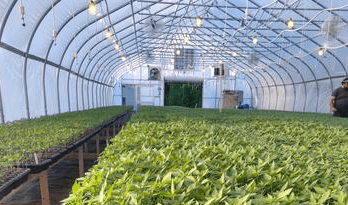
Biomass Yield
Hemp farmers are constantly trying to maximize their yield of CBD oil. This is achieved by growing large plants with heavy flowers. Growing practices are very important for high yields of biomass (plant material), but the vigor and growth rate of the plant is also dependent on the genetics of that particular hemp variety.
Certain strains of hemp will grow better in different climates. In the Northeast, hemp farmers will select hemp strains that reach maturity early so they can harvest before the first frost. Humidity is also a factor for strain selection. In humid regions of the United States farmers prefer hemp varieties that are resistant to mold and fungal infections, as these pathogens grow best in humid environments. Regardless of what crop they are growing, whether fruit, vegetables or hemp, farmers are always at the mercy of Mother Nature. With a favorable growing season, and the proper hemp variety, an experienced farmer can achieve high biomass yields.
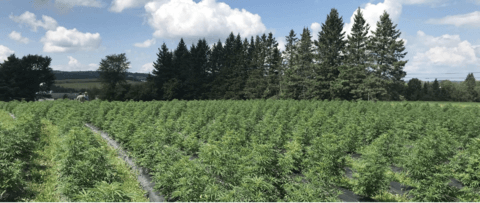
Photo Credit: Northern Roots Nursery
Cannabinoid Levels
Biomass yield is just half of the equation for farmers. When growing hemp for the production of CBD oil it is important to choose strains of hemp with high CBD and low THC. CBD levels can vary immensely between different strains. Hemp varieties can produce anywhere from zero to over 20% CBD, pushing farmers to try to maximize their CBD output by choosing to grow hemp with high levels of CBD. Unfortunately for farmers, choosing the right hemp plant is not that simple. In order to be classified as hemp rather than marijuana, the plant must have less than 0.3% THC by weight. Prior to harvest, state government officials sample hemp in order to ensure that the THC levels are below the threshold of 0.3%. If the hemp tests “hot” (Over 0.3% THC), the crop is confiscated and destroyed, leaving the farmer with a devastating financial loss. For this reason avoiding “hot” hemp is prioritized by farmers when selecting where to source their hemp.
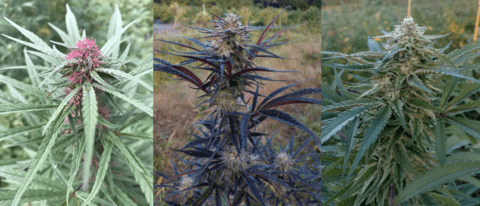
Photo Credit: Northern Roots Nursery
Feminized Seed
Hemp is unique from many species of plants because each individual plant is a single sex, male or female. The species of plants that have a single sex are classified as diecious, and include species such as Fig, Ginko, Asparagus and Cannabis. Female hemp plants produce large bud-like flowers where the seeds develop, while male plants produce small flowers that produce pollen. When pollen from the male flower comes in contact with a female flower a seed will develop and one bud can produce hundreds of seeds. Seeds are preferable when growing for the purpose of hemp seed as a food or for hemp seed oil, but for CBD oil production seeds are detrimental to yields of both CBD and biomass. CBD and other cannabinoids are produced in the highest concentrations in female flowers while male plants produce very little CBD. For this reason farmers grow only female plants when trying to maximize the yield of CBD.
Growing only female hemp plants, however, can be a challenge. Farmers will plant their seeds in spring, but the flowers do not begin to develop until late summer. When the flowers begin to emerge half way through the growing season, sex can be identified and male plants are cut down. Unfortunately for the farmer, not all plants will begin flowering at the same time, so they must meticulously check their fields daily and remove males as they come into maturity. A single male plant in a field of 1000 female plants can seed the entire crop. Additionally, every male plant removed is a plant a farmer has been spending time and resources on for the first half of the growing season. When half the plants are removed due to sex, the field only can produce half of what it could if all of the plants were female. Ethics also plays a large role in a farmer’s growing practice. If farmers do not remove males, not only can that seed their own hemp crop, but neighboring farms could be affected too.
Across the U.S. farmers are choosing to grow feminized plants so that they may maximize their yield. Feminized seed is produced through a special breeding practice where a female plant is exposed to external factors such as certain hormones, or specific chemical solutions. This procedure will induce the female plant to produce male flowers and the resulting pollen will produce exclusively female seeds.
The mechanism for this is simple; as in animals, sex of a Hemp plant depends on the presence or absence of the Y chromosome. Male plants have an X and Y chromosome, while females have two X chromosomes. Pollen produced from a female plant contain only female, or X chromosomes and lack the male, or Y chromosome. In this case, pollination of the female flower results in completely feminized seed.
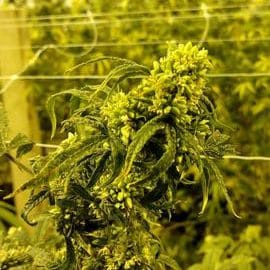
Photo Credit: Northern Roots Nursery
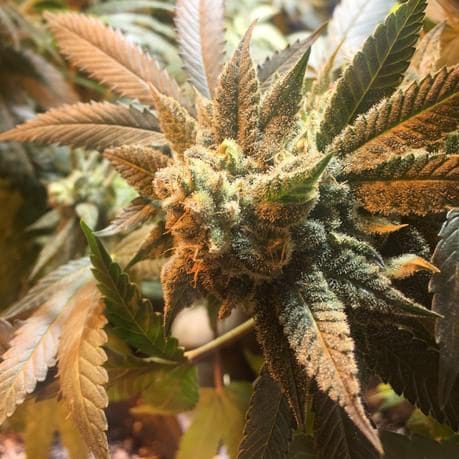
Photo Credit: Northern Roots Nursery
Across the country businesses like Northern Roots Nursery are stocking farmers up with high quality feminized hemp for this growing season. “Our job does not end at the sale of the plants,” says owner Ryan Podd, “We are committed to helping these hemp farmers have successful harvests, and be profitable. It’s our hope that they continue to choose our genetics to grow in future years.”
For more on Northern Roots Nursery visit them online at www.northernrootsnursery.com
- Tara



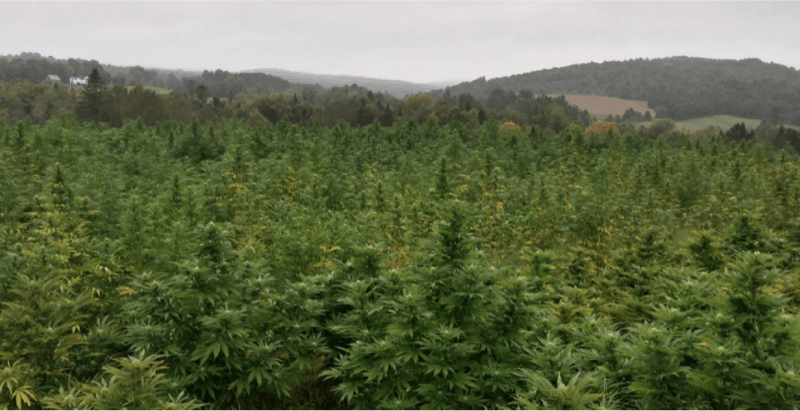





 BACK TO ALL BLOG POSTS
BACK TO ALL BLOG POSTS




